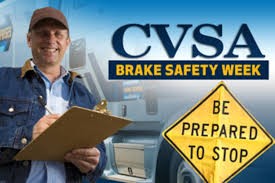As a professional driver, you are constantly exposed to the sun’s rays, so it’s essential to wear the proper sunglasses to protect your eyes. In addition to providing protection, the right sunglasses help you drive more safely by enhancing visibility.
Tips for Choosing the Right Sunglasses
Sunglasses are not just a fashion accessory, they are crucial for protecting your eyes from the sun’s harmful rays. It's important to understand which types of light you need protection from, and which are not necessarily harmful. Here are some tips for selecting the right pair of non-prescription sunglasses:
-
Choose glasses that block 99 to 100 percent of ultraviolet (UV) rays. This is the most important feature to look for. Long-term exposure to UV radiation is linked to eye diseases, including cataracts. Some labels may say "UV absorption up to 400nm"—this is the same as 100% UV protection. While some sunglasses claim to block infrared rays, research has not shown a strong connection between infrared rays and eye disease.
-
Don't assume expensive means better. On a budget? Many affordable sunglasses offer 99 to 100 percent UV protection. You don’t need to spend a
lot to get quality protection.
-
Check the optical quality of the lenses. Besides UV protection, it’s important to check for lens clarity. To test this, look at something with a rectangular pattern (like floor tiles), hold the sunglasses at a comfortable distance, and cover one eye. Move the glasses slowly from side to side and up and down. If the lines remain straight, the lenses are good. If the lines appear to wiggle, especially near the center, try a different pair.
-
Look for impact-resistant lenses. All sunglasses sold in the U.S. must meet impact resistance standards set by the FDA. While no lens is completely unbreakable, plastic lenses are less likely to shatter. Polycarbonate lenses, commonly used in sports sunglasses, are especially durable but scratch easily. If you choose polycarbonate, opt for lenses with a scratch-resistant coating.
-
Use protective eyewear for high-risk activities. If you’re participating in outdoor activities like water or snow skiing that could put your eyes at risk, don’t rely on regular sunglasses. Use protective eyewear with UV protection to guard against sunburn and glare.
-
Lens color and polarization are personal preferences. There is no medical reason to prefer one tint over another. Polarized lenses reduce glare more effectively, but they do not block more UV rays than non-polarized lenses.
Once you find the right sunglasses, make sure to wear them regularly; especially in the summer, when UV levels are at least three times higher than in the winter. It’s also important to wear them during winter sports, particularly at high elevations.
Question of the Week
I Got a Warning Letter from the FMCSA Regarding My CSA SMS Scores… What Should I Do?
A warning letter from the Federal Motor Carrier Safety Administration (FMCSA) is an opportunity to improve your safety performance and compliance before
further action is taken.
Read the letter carefully—it highlights your company’s specific safety and compliance issues based on Safety Measurement System (SMS) data. It also provides instructions for accessing your safety record and outlines the potential consequences if improvements are not made.
What Happens Next?
You do not need to respond directly to the letter. However, the FMCSA will continue to monitor your safety performance through its SMS platform: http://ai.fmcsa.dot.gov/sms/.
As a motor carrier, it’s essential to regularly review your SMS data and take corrective action where needed. If your safety performance does not improve, FMCSA may escalate its intervention. This could include:
-
Offsite Investigations
-
Onsite Investigations
-
Fines
-
Suspension or Revocation of Operating Authority
Take this warning as a proactive chance to address safety concerns before more serious enforcement measures are applied.
CVSA Brake Safety Week Scheduled for August 24-30
This year’s Brake Safety Week is scheduled for August 24–30, according to the Commercial Vehicle Safety Alliance (CVSA).
The enforcement campaign is part of the broader Brake Safety Awareness Month, which takes place throughout August.
During CVSA’s annual enforcement event, roadside inspectors will:
-
Focus on brake systems and components during North American Standard Inspections
-
Place a special emphasis on brake drums and rotors this year
The CVSA will issue a report on its findings later this year.
This event also serves as an opportunity for motor carriers to educate drivers and maintenance personnel on the importance of brake safety.










